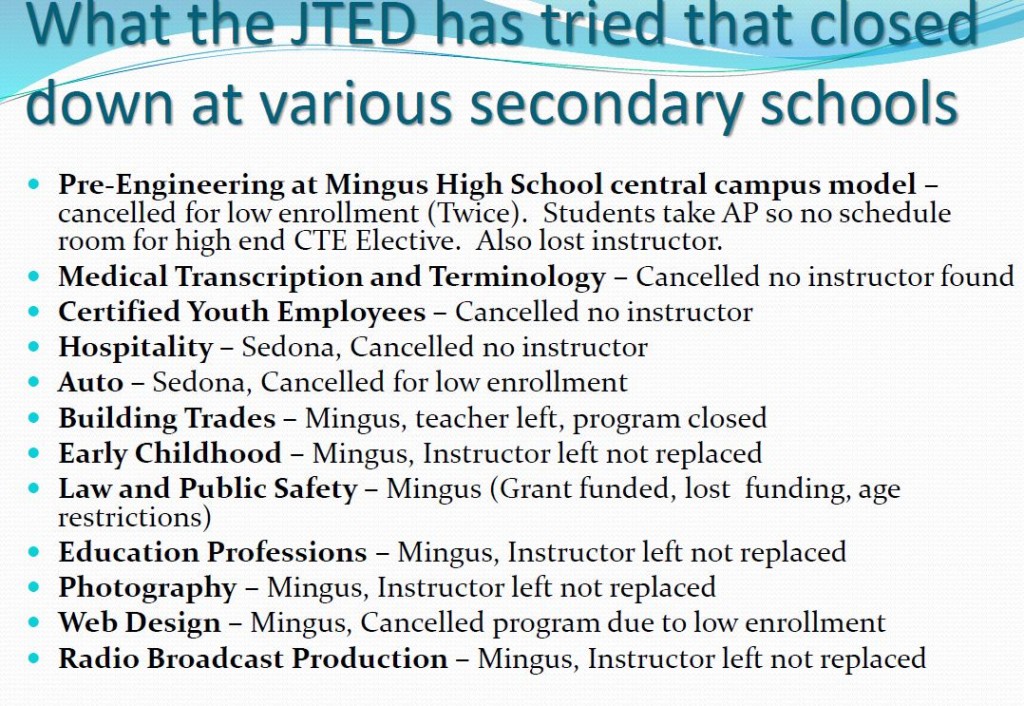Verde Valley Governing Board Advisory Committee hears about Career and Technical Education problems
At its February 18 meeting, the Verde Valley Advisory Committee to the College Governing Board heard Dean John Morgan and County Superintendent Tim Carter outline some of the problems that face future development of Career and Technical Education (CTE) on the East side of the County . Here are some of the issues that were discussed during their presentations.
1. Enrollment in Career and Technical Education (CTE) programs with only high school students on the East side of the County make them difficult, if not impossible, to operate effectively. A solution is to allow adults and high school students to simultaneously take CTE classes. This is a model used by the College Career and Technical Education Center (CTEC) on the Prescott campus in conjunction with the Mountain Institute JTED.
2. Obtaining and retaining qualified CTE faculty is very difficult. Because of their expertise, potential faculty can earn far higher wages in private industry than by teaching at the Community College.
3. Hiring retired former experts to teach CTE classes is problematic. On occasion, retired faculty may want to take time off during a semester, which the College may find difficult to provide. Hired folks have a particular life they want to lead and College demands do not always fit into their lifestyle.
4. Sedona Red Rock High School does not currently participate in CTE training. (Board members noted that enrollment patterns are changing in Sedona and CTE training may become of part of the Sedona Red Rock High School curriculum.)
5. There are typical young adult “competitive” issues among high school students that may discourage or prevent them from taking CTE classes at a high school that is not “theirs.” Therefore, a neutral site other than a high school is often preferable for CTE classes.
6. To solve the CTE issues on the East side of the County may require a series of work sessions with all East side superintendents and the Community College officials working them out. There may be some “pain” associated with these sessions as all parties will most likely have to compromise.
7. County Superintendent Tim Carter suggested that there are CTE funding models available that if used, could provide additional income to the East side of the County.
8. County Superintendent Tim Carter indicated he would be willing to try and work toward solutions to the CTE problem on the East side of the County if he is asked to do so. He has not been asked by the superintendents or College to step in and attempt a solution.
9. There is a history of failed programs on the East side of the County. It is not clear whether the failure has to do with a lack of student interest or a lack of Community College support.
10. Dean Morgan produced a PowerPoint slide that indicates why many classes have closed on the East side of the County. It is reproduced below:

